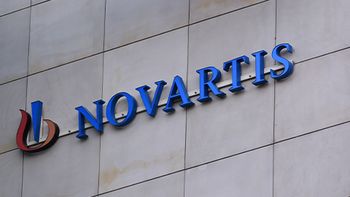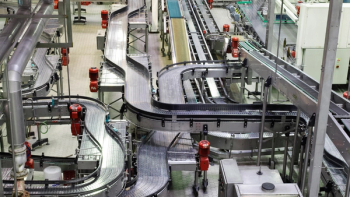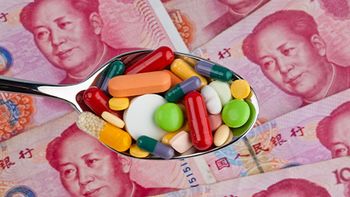
Enhancing Supply Chain Resilience amid Complexity in Pharma and Medical Devices
The growing complexity of supply chains necessitates the adoption of collaborative planning processes and capabilities such as S&OP and S&OE.
The pharma and medical device industry has significantly grown in recent years, driven by advancements in technology, increased demand for innovative therapies, and a heightened focus on patient-centric solutions. This expansion has created a more nuanced supply chain landscape that calls for agile and responsive supply chain planning capabilities to navigate regulatory challenges, fluctuating market demands, and global sourcing complexities. As companies strive to optimize their operations, they face a multifaceted challenge: They must ensure compliance with stringent regulations and manage the intricacies of logistics, inventory management, and distribution networks—all while contending with limitations in data and systems. According to EY research,1 82% of supply chain leaders reported that data silos and fragmented systems make it difficult to obtain end-to-end visibility of their supply chain. The growing complexity of supply chains in this sector necessitates the adoption of collaborative planning processes and capabilities such as sales and operations planning (S&OP) and sales and operations execution (S&OE). Also known as integrated business planning (IBP) in organizations that fully merge operational and financial planning, these processes and capabilities enhance efficiency and resiliency, ultimately ensuring that critical medical products reach patients in a timely manner. When coupling S&OP with S&OE, organizations can create a framework that governs their tactical or executional decisions in the near-term horizon (one to three months) with the more strategic decisions in their mid- to long-term horizon (four to 12 months).
Elevating the role of S&OE in resilient supply chains
In recent years, supply chain disruptions have forced more attention on near-term tactical and execution activities. This has resulted in more activity and investment in S&OE than in S&OP. The S&OE processes play a pivotal role in creating resilient supply chains by aligning commercial, financial, and supply chain activities. This alignment ensures that decisions are made in a coordinated manner leveraging cleansed and curated data, leading to increased revenue, improved service levels, reduced supply chain costs, greater productivity, better cash flow, and higher profits. Organizations that have successfully implemented S&OP with S&OE have seen significant improvements in their operational efficiency and overall business performance.
Companies with established S&OE processes benefit from identifying issues or constraints in the short- to midterm planning window. Focusing on this window allows for decisions to be made against the constraints early enough so as to not impact service levels. However, the journey to successful S&OE implementation is not without its challenges. Typical shortcomings include siloed decision-making, misaligned planning cycles, inconsistent product hierarchies, and disparate or nonexistent technology platforms. We often see clients whose functions have optimized their supply chain planning scope, but this has come at a cost: a suboptimal end-to-end supply chain. Both S&OP and S&OE provide the cross-functional governance necessary to break down these silos. Overcoming these challenges requires a comprehensive approach that fosters this cross-functional collaboration; synchronizes planning cycles; leverages cleansed and standardized data, as well as standardized and group-focused key performance indicators; and integrates technology platforms to ensure seamless data flow and decision-making.
Building planning maturity
Despite the clear benefits of S&OP and S&OE, many organizations are striving to improve their maturity to fully leverage these capabilities. These challenges track back to the various layers of the supply chain operating model—people, process, technology, performance metrics, governance, data, and organizational structure. Each of these layers can equally break down the planning operation, and their importance only grows with the increasing complexity of the global supply chains.
To address these issues, organizations need to invest in building their planning capabilities from the bottom up. This involves establishing clear processes, improving data fidelity and accessibility, and fostering a culture of collaboration across different departments. In many cases, time must be spent on developing the foundational demand and supply planning skills, capabilities, and technologies that are table stakes for the S&OP and S&OE journey. By doing so, organizations can lay the groundwork for more advanced planning capabilities, like IBP, in the future.
The need for agility and responsiveness in life sciences supply chains
Today’s supply chains face continuous disruptions, ranging from geopolitical tensions and natural disasters to epidemics. Life sciences supply chains are particularly susceptible to such challenges because they rely on both global and local suppliers, contract manufacturers and packagers. The disruptions have highlighted the need for organizations to be more agile and responsive. Organizations that have deployed S&OP successfully have effectively managed through these disruptions, although some of the challenges do require significant activity in the near-term window.
As a result, S&OP must be combined with S&OE to ensure that plans or schedules are executed effectively and that adjustments are made in real time. S&OE helps organizations respond quickly to changes in demand and supply in the near-term horizon, minimizing the impact of disruptions and maintaining service levels. By integrating S&OE with S&OP, organizations can create a more dynamic and responsive supply chain that can adapt to changing market conditions and customer needs.
The role of data and advanced planning technology
Data and advanced planning technology are playing an increasingly key role in S&OP and S&OE programs. Advanced analytics, artificial intelligence, and machine learning are being used to enhance forecast accuracy, optimize inventory levels, and improve decision-making. Digital twins and control towers are now leveraging both internal and external data sources to proactively assess risks and facilitate what-if scenarios to provide potential mitigation plans. These technologies enable organizations to process large volumes of data in real time, enabling insights that drive more informed and timely decisions. Additionally, integrated planning platforms facilitate seamless collaboration across different functions, ensuring that everyone is working with the same data and toward the same goals.
In a 2024 EY study, 97% of organizations cited supply chain metric challenges stemming from a lack of integrated data and conflicting cross-functional metrics. Compiling and creating a common data platform can be challenging as well. Much of the metric refreshment, demand plan enrichment, and supply optimization can be automated when firms deploy leading technologies and establish solid data governance. By leveraging cutting-edge technologies, organizations can enhance their S&OP and S&OE capabilities, leading to more efficient and effective supply chain operations. Of course, the use of advanced analytics, artificial intelligence, and machine learning technologies is based on the premise that core advanced planning capabilities for supply and demand planning have also been established, given that they provide a foundation for companies to build from along the maturity journey.
Increasing S&OP and S&OE maturity
Pharma and med device companies should consider a pragmatic approach to increasing the maturity of S&OP and S&OE both internally and with external partners. These organizations should start by engaging with leadership to align on the commitment to operating the organization through an S&OP and S&OE process. This involves assessing the current state of the organization’s planning processes, identifying gaps and areas for improvement, and developing a tailored roadmap to enhance planning capabilities. The methodology should emphasize quick wins and sustainable benefits, ensuring that improvements are both impactful and long-lasting. By taking a step-by-step approach, organizations can gradually build their planning maturity, leading to more resilient and responsive supply chains. Additionally, a step-by-step approach allows organizations to progress along the maturity curve, depending on which maturity level the organization aspires to achieve.
Conclusion
As the pharma and medical device industry continues its rapid evolution, navigating supply chain complexities has never been more critical for organizations. The integration of S&OP and S&OE processes is vital to enhancing supply chain resilience, especially as challenges mount—from regulatory compliance to market fluctuations. By fostering collaboration, leveraging advanced technologies, and adopting a pragmatic approach to planning maturity, industry players can optimize their operations while also positioning themselves to deliver essential medical products to patients without delay. Embracing these strategies will be key to thriving in a landscape where both uncertainty and opportunity are abundant.
The views reflected in this article are the views of the author and do not necessarily reflect the views of Ernst & Young LLP or other members of the global EY organization.
Source
- How to reclaim supply chain’s influence as a driver of growth. EY. https://www.ey.com/en_us/services/supply-chain/boosting-growth-supply-chains-role
Newsletter
Lead with insight with the Pharmaceutical Executive newsletter, featuring strategic analysis, leadership trends, and market intelligence for biopharma decision-makers.





